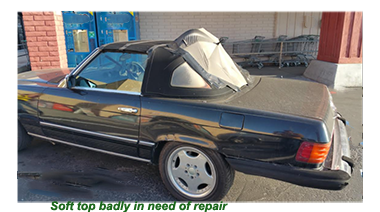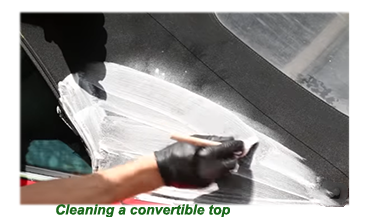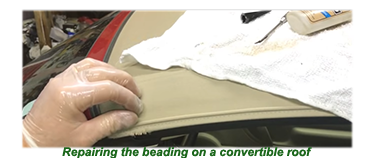 The very first convertibles evolved from the traditional horse-drawn buggies that graced UK cities in the late nineteenth century.
The very first convertibles evolved from the traditional horse-drawn buggies that graced UK cities in the late nineteenth century.
 When these buggies became motorised around twenty years later, they became known as phaetons meaning "open car".
When these buggies became motorised around twenty years later, they became known as phaetons meaning "open car".
Passengers in a Phaeton were exposed to the elements, probably not by choice, more because nobody had yet grasped the concept of putting roofs, windshields, or doors on their motor cars – that development was to come gradually over twenty years or so
 By the mid-Twenties, most of the vehicles found on UK roads were completely enclosed.
By the mid-Twenties, most of the vehicles found on UK roads were completely enclosed.
Yet there remained car lovers from whom the option of a folding top was still appealing.
Cars that could be converted from closed to open were referred to as cabriolets, which was gradually anglified to convertible soon slangily referred to as "soft tops." /p>
 Despite the UK and Europe's often unpredictable weather, soft tops remained in demand for those who were prepared to suffer for the occasional opportunity to have their hair blow in the wind.
Despite the UK and Europe's often unpredictable weather, soft tops remained in demand for those who were prepared to suffer for the occasional opportunity to have their hair blow in the wind.
Unfortunately, because they were too often exposed to the elements, convertibles were seen to be more susceptible to the passing of time and have become increasingly scarce and thus valuable collector's items.
![]()
It must be no coincidence that the same cross-section of motoring society that chose to buy a soft top when new would go out of their way to buy one to restore, with the unique challenges it provides.
 Restoring a soft top is a job for specialists only, and all that the restorer can do is hope that some of the original top can be salvaged.
Restoring a soft top is a job for specialists only, and all that the restorer can do is hope that some of the original top can be salvaged.
If the top has never been renewed during its time on the road, then the chances are that even the basic frame is ruined and the whole apparatus changed along with the fabric top.
What is essential is to find a reliable company who can be trusted to do a good job.
 Depending on the mindset of the restorer, refurbishing a convertible roof creates a lot of new possibilities.
Depending on the mindset of the restorer, refurbishing a convertible roof creates a lot of new possibilities.
Possibilities that were not anywhere near available when the vehicle first rolled off the production line.
Depending on the extent of wear and damage to the soft top, it more or less likely will have to be scrapped and replaced with a new one.
The company chosen to work on the roof will use their experience to suggest the best materials to replace the unsightly, worn and torn cloth.
![]()
At the same time, if they are doing their job correctly, they are likely to strongly suggest to their customer to fit a hydraulicly operated opening and closing apparatus made up of a small electric pump that pushes fluid through hoses into pressurised cylinders which can be activated remotely and do the job in a matter of seconds.
 Not a bad idea considering the weather conditions in the UK and Europe, where downfalls can start without warning.
Not a bad idea considering the weather conditions in the UK and Europe, where downfalls can start without warning.
 Once the design and construction have been specified, the actual renovation can get underway, bringing in the elaborate engineering factors that go into the design and function of the convertible top frame.
Once the design and construction have been specified, the actual renovation can get underway, bringing in the elaborate engineering factors that go into the design and function of the convertible top frame.
These include side rails with cross members spaced and hinged to allow for compression and expansion.

 For the top to open and close without hitches, all the frame components must manually fold and stow away easily without damaging the canvas fabric or bending any of the elements that make up the convertible top frame.
For the top to open and close without hitches, all the frame components must manually fold and stow away easily without damaging the canvas fabric or bending any of the elements that make up the convertible top frame.
Once the soft-top restorers have worked their magic, pretty soon, the proud owner will begin to check the weather reports looking for just the most minor opportunity to show off his or her restored classic convertible.
ae4

